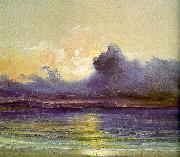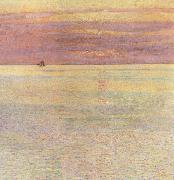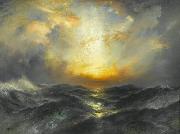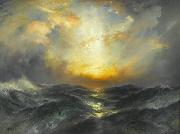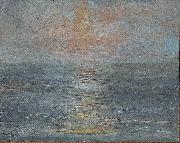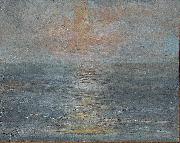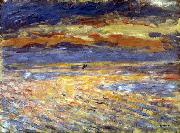Wholesale Oil Painting Reproductions No Minimum and Door to Door! |
|||||||||||
|
|
|||||||||||

|
|||||||||||
|
|
|
||||||||
All Charles Blechen Oil Paintings |
||||||||
|
|
||||||||
|
|
||||||||
|
Artist Introduction: 1789-1840
German
Charles Blechen Locations |
||||||||
|
|
||||||||
|
Sunset at Sea Painting ID:: 72 |
Oscar Reinhart Foundation, Winterthur |
|||||||
Height Width |
INS/CM Quality |
|||||||
|
X |
| |||||||
|
|
||||||||
All Childe Hassam Oil Paintings |
||||||||
|
|
||||||||
|
|
||||||||
|
Artist Introduction: 1859-1935
Childe Hassam Locations
Frederick Childe Hassam (b. October 17, 1859, Dorchester, Boston, Massachusetts ?C d. August 27, 1935, East Hampton, New York) was a prominent and prolific American Impressionist painter, noted for his urban and coastal scenes. Along with Mary Cassatt and John Henry Twachtman, Hassam was instrumental in promulgating Impressionism to American collectors, dealers, and the museums. He produced over 3,000 paintings, watercolors, etchings, and lithographs in his career, and was a founding member of The Ten, an influential group of American artists of the early 20th century. His most famous works are the ??Flag?? paintings, completed during World War I.
Hassam (pronounced HASS'm;) (known to all as Childe, pronounced like child) was born in his family home in a suburb of Boston in 1859. His father Frederick was a cutlery merchant and descended from a long line of New Englanders, while his mother Rosa was a native of Maine. He demonstrated an interest in art early in his life. He had his first lessons in drawing and watercolor while attending the Mather public school, but his parents took little notice of his nascent talent.
A disastrous fire in November 1872 wiped out much of Boston??s commercial district including his father??s business. To help out the family, Hassam dropped out of high school and his father lined up a job for him in the accounting department of publisher Little Brown & Company. His poor aptitude for figures, however, convinced his father to allow him to pursue an art career, and Hassam found employment with George Johnson, a wood engraver. He quickly proved an adept draftsman (??draughtsman?? in the Boston directory) and he produced designs for commercial engravings, such as images for letterheads and newspapers. Around 1879, Hassam began creating his earliest oil paintings but his preferred medium was watercolors, mostly outdoor studies.
|
||||||||
|
|
||||||||
|
|
Sunset at Sea Painting ID:: 54508 |
mk235
1911
oil on canvas
86.3x86.3cm
|
||||||
Height Width |
INS/CM Quality |
|||||||
|
X |
| |||||||
|
|
||||||||
All Thomas Moran Oil Paintings |
||||||||
|
|
||||||||
|
|
||||||||
|
Artist Introduction: b1837 UK d1926
Thomas Moran Locations
Thomas Moran (February 12, 1837 - August 25, 1926) from Bolton, England was an artist of the Hudson River School who often painted the Rocky Mountains. Thomas Moran's vision of the Western landscape was critical to the creation of Yellowstone National Park. Thomas Moran along with Albert Bierstadt, Thomas Hill, and William Keith are sometimes referred to as belonging to the Rocky Mountain School of landscape painters because of all of the Western landscapes made by this group.
|
||||||||
|
|
||||||||
|
|
Sunset at Sea Painting ID:: 71441 |
ca. 1906(1906)
Oil on canvas
76.7 x 102.1 cm (30.2 x 40.2 in)
|
||||||
Height Width |
INS/CM Quality |
|||||||
|
X |
| |||||||
|
|
||||||||
All Thomas Moran Oil Paintings |
||||||||
|
|
||||||||
|
|
||||||||
|
Artist Introduction: b1837 UK d1926
Thomas Moran Locations
Thomas Moran (February 12, 1837 - August 25, 1926) from Bolton, England was an artist of the Hudson River School who often painted the Rocky Mountains. Thomas Moran's vision of the Western landscape was critical to the creation of Yellowstone National Park. Thomas Moran along with Albert Bierstadt, Thomas Hill, and William Keith are sometimes referred to as belonging to the Rocky Mountain School of landscape painters because of all of the Western landscapes made by this group.
|
||||||||
|
|
||||||||
|
|
Sunset at Sea Painting ID:: 72580 |
Date ca. 1906(1906)
Medium Oil on canvas
Dimensions 76.7 X 102.1 cm (30.2 X 40.2 in)
cyf |
||||||
Height Width |
INS/CM Quality |
|||||||
|
X |
| |||||||
|
|
||||||||
All unknow artist Oil Paintings |
||||||||
|
|
||||||||
|
|
||||||||
|
Artist Introduction: |
||||||||
|
|
||||||||
|
|
Sunset at sea Painting ID:: 74003 |
"Sunset at sea", oil painting on canvas (34 x 44 cm), door Romain Steppe (1859-1927); private collection
cjr |
||||||
Height Width |
INS/CM Quality |
|||||||
|
X |
| |||||||
|
|
||||||||
All unknow artist Oil Paintings |
||||||||
|
|
||||||||
|
|
||||||||
|
Artist Introduction: |
||||||||
|
|
||||||||
|
|
Sunset at sea Painting ID:: 75502 |
English: "Sunset at sea", oil painting on canvas (34 x 44 cm), door Romain Steppe (1859-1927); private collection
cyf |
||||||
Height Width |
INS/CM Quality |
|||||||
|
X |
| |||||||
|
|
||||||||
All Pierre-Auguste Renoir Oil Paintings |
||||||||
|
|
||||||||
|
|
||||||||
|
Artist Introduction: French Impressionist Painter, 1841-1919
French painter, printmaker and sculptor. He was one of the founders and leading exponents of IMPRESSIONISM from the late 1860s, producing some of the movement's most famous images of carefree leisure. He broke with his Impressionist colleagues to exhibit at the Salon from 1878, and from c. 1884 he adopted a more linear style indebted to the Old Masters.
His critical reputation has suffered from the many minor works he produced during his later years. |
||||||||
|
|
||||||||
|
|
Sunset at Sea Painting ID:: 96405 |
1879(1879)
Medium oil on canvas
cyf |
||||||
Height Width |
INS/CM Quality |
|||||||
|
X |
| |||||||
|
|
||||||||
|
Prev Next
|
||||||||
|
|
||||||||
|
Related Paintings to Pierre-Auguste Renoir :. |
||||||||
|
|
||||||||
|
CONTACT US |
